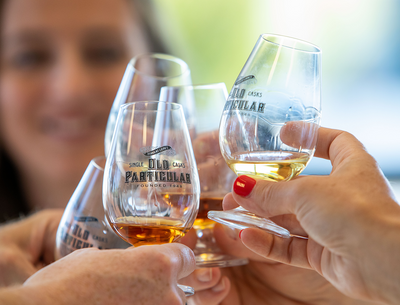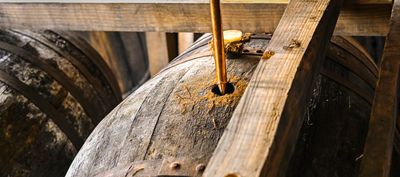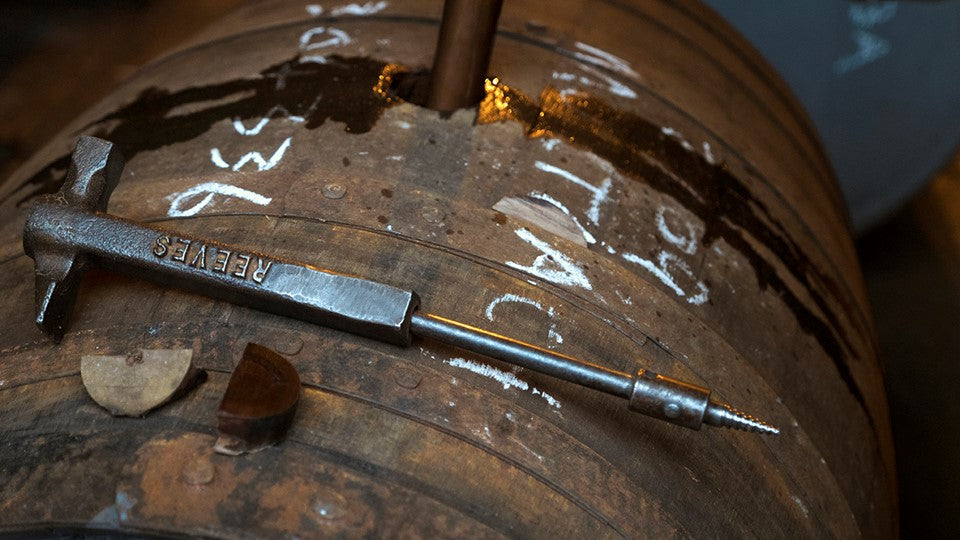Our Fellow, Dr. Heinz Weinberger from Whisky-Connaisseur, has written this guest blog for us which delves into the fruity world of ester compounds in Scotch Whisky...
Many whiskies, not only the Scottish ones, have a more or less pronounced fruitness.
Especially those from Speyside, Scotland's largest Whisky region in terms of the number of distilleries, are often dominated by fruity aromas, ranging from berries, apples and exotic fruits, to spices and even glue. When I, as a Douglas Laing's Fellow, tried a sample of an Aberlour from their Old Particular Series distilled in 1992 and matured for 21 years in a Refill Hogshead, I was thrilled by its soft and delicious fruity notes of pear, peach and lemon. Fruity notes are one of the most recognisable flavours when judging a Whisky. But what chemical compounds are responsible for this and where do they come from? To understand this, we need to refresh our dusty chemistry knowledge from school.
WHAT ARE ESTERS?
There are chemical compounds that are composed of two different components. One is an acid, e.g. the acetic acid contained in vinegar, and the other is an alcohol, such as the drinking alcohol ethanol. These two react under acidic conditions to form a new class of substances: the so-called esters. This equilibrium reaction, in which water is split off, was first described by the German chemist Emil Fischer at the end of the 19th century and is therefore also known as "Fischer Esterification". In the following example, acetic acid and ethanol react by splitting off water to form acetic acid ethyl ester, also known as ethyl acetate.

Esters are mainly formed during fermentation, the stage of whisky production in which the yeast converts the sugar glucose mainly into ethanol. Over 100 different esters have been identified, which were formed during the fermentation process. Longer fermentation times usually lead to more fruity properties. In addition, esters are formed during distillation in pot stills when acids and alcohols meet and react with each other within the rising vapours on the copper surface. Rising temperatures favour the Fischer reaction toward the esters. In addition, esters are also formed during years of maturation in oak casks from the large number of acids and alcohols that were already formed by the yeast during fermentation. Esters are responsible for the pleasant and attractive fruit aromas and are therefore the stars of the Whisky world. Naturally, ethyl acetate, formed from acetic acid and ethanol, is the most frequently found ester in Whisky. Ethyl acetate is an indicator of maturation. It is continuously formed in the cask and its concentration increases steadily. While ethyl acetate in low concentrations exudes a fruity aroma reminiscent of green apples, with excessive age of the distillate the amounts of this ester can reach an area where an unpleasant, industrial chemical or airplane glue odour develops.
It is amazing how the smell of an acid changes when it reacts with an alcohol to form an ester. We all know formic acid – a colourless, corrosive and water-soluble liquid that is widely used in nature by living beings for defence purposes. If this corrosive chemical is reacted with ethanol, ethyl formate is formed – an ester with a pronounced aroma of rum or arrack! Or even more impressive. Some of us may recall pranks in school when a few drops of a colourless, oily liquid sprayed in the classroom caused lessons to be cancelled: butyric acid. Anyone who has ever smelt this substance will never forget it: a penetrating smell of sour milk, sweat, rancid butter and fresh vomit. It's hard to believe what happens when this disgusting liquid reacts with ethanol. Then the ester ethyl butyrate is formed, which has a characteristic pineapple aroma! Depending on the acid and alcohol components, esters with aromas such as raspberry (formic acid and butanol), banana (butyric acid and isobutanol), blackberry (salicylic acid and butanol), coconut (octanoic acid and propanol), peach (propanoic acid and pentanol), ripe pear (acetic acid and amyl alcohol), red apple (formic acid and propanol) or cinnamon (cinnamic acid and ethanol) are produced. This list could go on much longer and each time different fruity notes appear.




